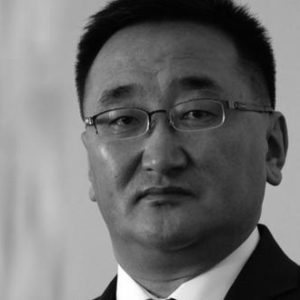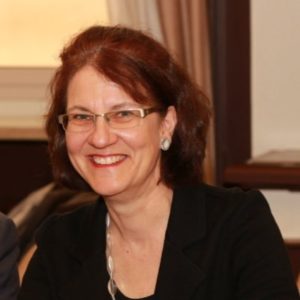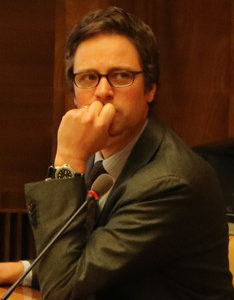Événement Conférence
Launch | Greening the China-Mongolia-Russia economic corridor: A visual synthesis

01 Oct 2020
11:00–12:20
Lieu: International Environment House II (7-9 ch. de Balexert) & Webex Event
Organisation: Geneva Environment Network, Zoï Environment Network
The launch of a new report "Greening the China–Mongolia–Russia economic corridor - A virtual synthesis", organized within the framework of the Geneva Environment Network took place on 1 October 2020, at the International Environment House. This report, illustrating the Belt and Road developments in Mongolia, was prepared by Zoï Environment Network, with the support of the Swiss Federal Office for the Environment and the Permanent Mission of Mongolia to the United Nations in Geneva.
About the report
Strategically located between Russia and China, Mongolia is ready to seize an exceptional development opportunity by signing on to a trilateral economic corridor project proposed under the Belt and Road Initiative. As a part of multi-billion dollar infrastructure investments in railways, roads, energy supply and mines, the China-Mongolia-Russia corridor aims to improve transportation among the three countries and further expand trade networks across Eurasia.
This report offers an analysis of the key development projects, environmental pressure points and approaches to mitigation. Greening the China–Mongolia–Russia economic corridor – an opportunity not to miss – will take rigorous infrastructure planning, the implementation of strong sustainability criteria and safeguards and active cooperation among country stakeholders.
Report authors
Concept and research: Beibei Gu, Viktor Novikov, Otto Simonett
Inputs: Ariuna Dorjsuren, Elizabeth Losos, Nara Luvsan, Sodmandakh Nyamryenchin, Mandakh Nyamtseren, Rowan Palmer, Laura Platchkov, Joseph Price, Lundeg Purevsuren, Martine Rohn-Brossard, Fulai Sheng
Cartography and visuals: Matthias Beilstein, Alexandra Povarich, Carolyne Daniel
Editor: Geoff Hughes
Layout: Carolyne Dani
Speakers

H.E. Amb. Purevsuren LUNDEG
Permanent Representative of Mongolia to the United Nations Office and other international organizations in Geneva

Martine ROHN
Deputy Head, International Affairs Division, Federal Office for the Environment, Switzerland

Otto SIMONETT
Director, Zoï Environment Network

Rowan PALMER
Programme Specialist, Sustainable Infrastructure Partnership
Video
The event was live on facebook.
Summary
Opening | Ambassador Purevsuren Lundeg
The “Greening the China-Mongolia-Russia economic corridor” is a major report reflecting on challenges and opportunities of a programme signed in 2016, aiming at connecting three countries in Asia, and also two continents, Europe to Asia. It provides a visual synthesis faced by Mongolia, China and Russia in greening their trilateral economic corridor.
Mongolia didn’t want to repeat mistakes other countries did on not preserving the environment when building infrastructures. The government of Mongolia has therefore paid a lot of attention on how to secure the highest environmental standards for this project.
The CMR corridor, one of the six economic corridors of the Belt and Road initiative, aims to improve transport connectivity and cross-border trade services through infrastructure development, and to strengthen cooperation across energy, agribusiness, communication technology, tourism and environmental protection.
Currently, there is one line of railway connecting China-Mongolia-Russia. This line will be doubled and electrified. The trade volume between China and Russia is increasing, from 60 billions 3 years ago, and now over 100 billions. The passing capacity through the Mongolian territory need to increase. In 2017, 539 trains from the China-Europe freight, were passing through Mongolia. In 2019, that was 1454 trains.
Martine Rohn – Switzerland
Looking at the broader context of the project:
- the implementation of the SDGs will require a lot of infrastructure (75% by 2030)
- The implementation of the Paris Agreement will also require infrastructure, for example for the extraction of natural resources for electric cars or digitalization
- In the Covid-19 recovery packages, governments also will put an emphasis on infrastructure.
- All this investment should be as sustainable as possible.
At the international policy level
- The Belt and Road Initiative was announced in 2013.
- Paris Agreement and SDGs in 2015
- The first Belt and Road forum took place in China in 2017. Mongolia was aware since the beginning of the big chances of infrastructure for the country, not only for the economic development, but also the risks to be avoided for the environment.
- Mongolia required UNECE to make an environmental performance review, published in 2018. This valuable document provides a lot of recommendations on how to green the strategy of the country.
- Mongolia took the lead at UNEA-4, underlining that sustainable infrastructures are really important for the international community. It was a strong commitment from Mongolia.
- Coming in the next years: 2021, UNEA-5; 2022 UNECE EfE
Concerning the Switzerland’s engagement, Switzerland support:
- UNEP for its work on sustainable infrastructure and mineral resource governance,
- GRID-Geneva for sand extraction
- GGKP and its various platforms
- OECD on sustainable infrastructure
- UNECE with its environmental performance review program and all the conventions
In 2019, Switzerland supported a first Zoï publication on Greening the BRI Projects in Central Asia.
Otto Simonett – Zoï Environment Network
In two years, it will be the 50 years of UNEP and of the Stockholm Conference. A lot of people have worked for half a century to build environmental safeguards. We are very much interested in seeing them operational.
There are six new Belt and Road corridors: the one passing by Mongolia is the shortest. In the report, they talk about the quality of infrastructure in Mongolia, China and Russia and it shows that Mongolia has a lot to catch-up. There is a new map of the corridor with the 4 rails and 3 road routes. New infrastructure development will help to transport coals by rails instead of roads.
Energy is also very important: new energy infrastructure is in development. Currently, Mongolia is using a lot of coal even if it has enormous potential for solar and wind energy. The technology is there, the political will is there, so it is just a matter of taking the shift to modernize the energy sector.
The trade flows between Mongolia, China and Russia depends a lot on raw materials: petroleum, gold, coal.
The environmental stakes: Mongolia has enormous natural treasures: water, lot of diversity and landscapes, deserts, protected species… But there are some threats: climate change, extracting industry… Mongolia is one of the largest producers of cashmere and wool of the world. Mongolia has a lot of idea and initiatives to have a sustainable development. This report explains very simply what needs to be done: what are the good practices and where you should exercise cautions.
The corridor will allow a green economy: increase of tourism, increase of forest cover, extent of sanitation services, increase renewable energy… Mongolia has ambitious goals on green economy.
Rowan Palmer – Sustainable Infrastructure Partnership
The report really permits a visual communication on complex information, in a way that is easy to understand.
The report illustrates the importance of integrated approaches and present an integrated analysis on the development of the Mongolia-China-Russia corridor. The corridor approach allows to have an integrated view on the sectors for example it presents the potential for solar and wind energy. It is looking at the social-environmental-economic dimension, the synergies and the trade-offs on these three aspects.
This report presents linkages with the work of the UN Sustainable Infrastructure Partnership. The work of the Sustainable Infrastructure Partnership is based on UNEA Resolution 4/5 on Sustainable Infrastructure (developed by the impulsion of Mongolia). This resolution asks UNEP to support Member States to develop sustainable infrastructure as a means of implementing the SDGs. But also, to collect and share best practice, building on existing initiatives and identifying knowledge gaps, to assist member States in promoting and strengthening the sustainability of their infrastructure and to submit that report at the next UNEA.
For the implementation of this resolution, UNEP created the Sustainable Infrastructure Partnership:
- Raise awareness on the importance of infrastructure for the 2030 Agenda
- Develop streamlined normative and technical guidance to scale up the application and the integration of existing tools and approaches in support of different sustainable development priorities
- Strengthen the technical and institutional capacity of developing countries
The Sustainable Infrastructure Partnership created a Good Practice Guidance Framework for Sustainable Infrastructure to help the integration of sustainability across the infrastructure lifecycle through needs-based (approaches that are people centered), systems-level, integrated approaches. It also focuses on systems-level interventions, emphasis on the early planning phases and enabling environment (institutions, processes, policies).
The integrated approaches consider all the aspects of sustainability and the interlinkages of different infrastructure systems and sectors. Moreover, nature is considered as an infrastructure (the landscapes and ecosystems that provides the same services than build infrastructures). This type of approach requires cooperation among governments and among the different sectors.
The Guidance Framework will be complemented by a publication of key studies and the creation of a Sustainable Infrastructure Tool Navigator online to see the available tools that can support the sustainable infrastructure.
From July until September, they conducted regional meetings with member states around the Good Practice Guidance Framework to try to collect the best practices and the experiences of Member states with sustainable infrastructure. Some of the outcome of theses consultations emphasis the need for a better coordination between all the stakeholder, the need to incentivize the private sector to make a strong business case for sustainability, and there is a need for technical and institutional support for sustainable infrastructure specially in developing countries. They will present the feedback they received at the next UNEA.
Additional remarks by Ambassador Purevsuren Lundeg
Mongolia has a great tradition for nomadic. For millions of years, nomads lived in harmony with the environment in Mongolia, therefore the environment is really important to keep the tradition and to not make the mistake others made.
Q&A
- Elena Koritchenko (University of Geneva): How do you manage to integrate all those frameworks, standards and tools and which of the framework do you find the more useful?
Answer by Ambassador Purevsuren Lundeg: the government should set the standards, China is interested to keep the international standards, the new banks, they try to have the highest environmental standards.
Answer by Martine Rohn: there are many standards and perhaps in the Guidance framework we could put them all together. At this stage the government and the investors are a bit lost in all these standards. UNEA5 will be the beginning of the answer on this issue.
Answer by Otto Simonett: these are huge projects, so they can spend money to find out what is the most appropriate standard. Before the standards, transparency is really important. If people and NGOs don’t know that a project is happening, then they can’t interact.
- Riad Baazia (NGO/Civil society) How this experience could be duplicated in other countries for example in landlocked countries in Africa? How other countries could learn?
Answer by Ambassador Purevsuren Lundeg: Mongolia is hosting since two years the UN Think Tank for Landlocked Developing Countries (http://land-locked.org/ ). In the world there are more than 50 countries that are landlocked, 32 are developing countries. They are great cost for landlocked countries, it is a difficult geographical situation. The next port for Mongolia is a Chinese port more than one thousand kilometers. A lot of landlocked countries are in Africa. To achieve the SDGs, the economic part is important, but we need to keep in mind the environmental issues. Mongolia is happy to share its experience to other countries and should and must contribute to strengthen the international law in that direction.
Answer by Martine Rohn: now that it is at the political agenda of UNEP for the first time since 2019, she hopes that at UNEA5, they will have a discussion on duplication, on good practices, and how we can enhanced this work in other part of the world.
- Nicholas Bonvoisin: Will the report be published in Mongolian too? Will the publication also be taken to UNEA-5 to illustrate good practice in infrastructure planning?
- Yves Lador: To his excellency: Will we be able to greet Mongolia as a new Party to the Aarhus Convention at the coming Meeting of the Parties in 2021? Mongolia has taken such an engagement at its last Universal Periodic Review at the Human Rights Council.
- To Otto Simonett: An approach by corridor is indeed very relevant for the Mongolian situation. Do you see this approach extensible to other geographic areas?
- Krittika Uniyal: I would like to request if you could talk a bit more about the impact of the corridor on the communities across the corridor (and if there was any resistance from them).Answer by Ambassador Purevsuren Lundeg: they are going to talk to the Ministry of foreign affairs and the Ministry of environment in Mongolia to publish the report in Mongolian and he thinks they should have it in Mongolian for the launch of the report in Mongolia. For the Aarhus convention, the discussion is still ongoing, it is a possibility that one day Mongolia will join. On the last question, the corridor approach allows to intensify the economic development, and of course, any local groups in the area of the infrastructure should have advantages.
Answer Martine Rohn: regarding UNEA5, this report will be mention as an example. Concerning UNEA5 itself, it is difficult to see how it will work with the Covid-19, she hopes that the government of Mongolia will take the opportunity with this report to have a very active role at UNEA5 to create new resolutions on the sustainable infrastructure as it was the case at UNEA4.
Answer by Rowan Palmer: the report should be present as an example of success at UNEA.
Answer by Otto Simonett: corridors are everywhere. The World Bank, UNDP, tend to focus their analysis on one country. For him, it’s an international concept. This type of analysis is needed everywhere and is a good methodology.
- Asad Naqvi (PAGE): How do you link this corridor concept with the 2030 indicators? We need to bring private financing behind it. The infrastructure creates emissions, but then we can use it to transport polluting goods or environmental goods. Mongolia has been impacted by the Covid-19, it will be good to see the government vision on making the economy green and inclusive.
Answer by Ambassador Purevsuren Lundeg: Mongolia manage quite well the covid-19. Mongolia economy should shrink according to the World Bank. The recovery should be green. Rails will be ready in 2022 to transport coal by rail instead of roads. We should use renewable sources. They have cashmere (largest producer in the world), dairy products, wool, meat… They work on these issues. The parliament is planning to talk about the cashmere management. Financing is a major issue, the government budget is not enough for big projects, it should be a joint effort from the private and the public sector.
Answer by Martine Rohn: this report is the beginning of a good discussion: there is good examples and less good examples and we should continue this discussion also with PAGE. It is interesting to see what is good and what is needed to have more focus.
Documents
- Report
- Invitation
- H.E. Amb. Purevsuren LUNDEG Presentation
- Martine ROHN Presentation
- Rowan PALMER Presentation
